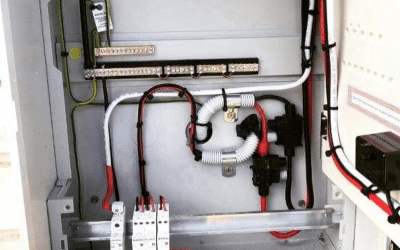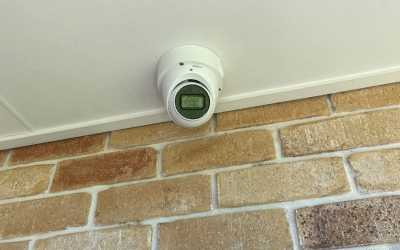For many of us in Brisbane, receiving the electrical bill can sometimes be a moment filled with uncertainty and confusion. Understanding your electrical bill is not just about knowing what you have to pay, but understanding why you’re paying what you are. This is crucial for several reasons, not the least of which is the financial control it offers. By demystifying the figures and terms on your electrical bill, you’re not only positioning yourself to manage your expenses better but also paving the way for significant energy and cost savings.
Brisbane residents often encounter common issues that stem from a lack of clear understanding of their electrical bills. This can range from the frustration of unexpected high charges to the perplexity of how seasonal changes affect energy costs. Without a clear understanding, it’s challenging to effectively manage or contest your charges, let alone take advantage of energy-saving opportunities. Furthermore, many residents are not fully aware of how to read meter readings or what kWh rates entail, which are fundamental in calculating your monthly charges. Understanding these components is the first step towards taking control of your energy consumption and, by extension, your financial output.
In the following sections, we’ll explore how to break down your bill into understandable parts, highlight ways to monitor and reduce your energy usage, and discuss how you can utilise government rebates and the benefits of solar installations. With these insights, you’ll not only reduce your monthly bills but also contribute towards a more sustainable lifestyle.
What is an Electrical Bill?
An electrical bill is essentially a statement from your energy provider detailing the charges for the electricity you have consumed during a specific period. This bill reflects not only your energy usage but also incorporates various fees and rates applied by your provider. Understanding this document is essential for managing your household budget and ensuring you’re not paying more than you should.
In Brisbane, electrical bills are typically issued monthly or quarterly, depending on your provider and your personal preference. The rates charged can vary, influenced by factors such as the time of use, the total energy consumed, and even the season, as energy demands fluctuate due to weather conditions affecting heating and cooling needs.
Key Components of Your Electrical Bill
Your electrical bill comprises several charges and fees that together determine the total amount you owe. Here’s a closer look at these components:
- kWh Usage: The kilowatt-hour (kWh) is the unit of measurement used to determine how much electricity you’ve used during the billing period. It represents the energy consumption of a 1000-watt appliance running for one hour. Your total kWh usage is a direct indicator of your energy consumption.
- Service Charge: This is a fixed fee that covers the cost of maintaining and servicing your electrical connection. It’s charged by your provider and is independent of how much energy you actually use.
- Tariff Components:
- Peak, Shoulder, and Off-Peak Rates: Depending on your tariff plan, rates can differ based on the time of day. Peak rates are higher due to increased demand, typically during late afternoon and early evening. Shoulder rates apply before and after peak periods, and off-peak rates are usually charged during the night and early morning when the demand is lowest.
- Demand Charges: Some bills may include a charge based on the highest rate of electricity usage in a given period, which is intended to reflect the cost of generating and supplying power during times of high demand.
- Renewable Energy Charges or Green Energy Fees: These are optional fees for those who choose to support the generation of electricity from renewable sources.
Understanding these components helps you identify potential areas where you can cut costs. For instance, shifting some of your high-energy activities to off-peak times can significantly reduce your bill. Additionally, being aware of how each component affects your total can aid in spotting any discrepancies or errors in your billing. This knowledge not only empowers you to manage your energy usage more effectively but also ensures that you are fully informed about where your money is going, helping you make smarter, cost-effective decisions regarding your energy consumption.
How to Read Your Electrical Bill
Interpreting your electrical bill can initially seem daunting, but breaking it down into sections can help demystify the process. A clear understanding allows you to track your energy usage, identify billing errors, and find opportunities to reduce costs. Here, we’ll walk through a typical Brisbane electrical bill, using visual aids and examples to enhance clarity.
Step-by-Step Guide on Interpreting Each Section of Your Bill
- Account Information: This section contains your account number, billing date, and contact information for your energy provider. It’s essential for any correspondence with your provider.
- Billing Period: Indicates the specific dates during which the energy usage was recorded. Comparing these periods can help you understand your energy patterns over time.
- Summary of Charges: This is an overview of the total amount due, including any previous balance, current charges, and payments made during the period.
- Detailed Usage and Charges:
- Energy Usage Graph: Often presented as a bar graph showing your daily or monthly energy usage, which helps you visually compare changes over time.
- Charge Breakdown: Lists all the charges applied, including service fees, kWh usage charges, and any additional tariffs. Each item is typically explained in terms of rate applied and total cost.
- Payment Information: Details on how to pay your bill, including due dates and payment methods.
- Messages or Updates: This section may include information about rate changes, energy-saving tips, or other notifications from your provider.
Understanding Meter Readings
Your electrical meter records the amount of electricity you consume. The reading from your meter is central to calculating your bill. Here’s how meters impact your bill and how you can read them yourself:
- How Meters are Read: Energy providers typically read your meter at the end of each billing period to determine your usage. This can be done manually by a technician or automatically via a smart meter. The reading is a simple numerical value that indicates how many kWh of electricity have been used since the last reading.
- Reading Your Own Meter:
- Locate Your Meter: Typically, meters are located outside the house or in easily accessible areas.
- Understand the Display: For digital meters, read the number shown on the display. For analog meters, read the dials from left to right, noting that some dials move clockwise and others counterclockwise.
- Track Regularly: By taking your own readings at set intervals (e.g., weekly), you can monitor your consumption patterns and identify any significant changes or anomalies.
Visual aids, like a photographed example of a meter with annotations explaining the numbers, can be especially helpful here. Tracking your meter readings not only helps you ensure that your bills are accurate but also empowers you to manage your energy usage proactively, adjusting habits as needed to save on future bills.
How to Calculate the Cost per kWh
Understanding how to calculate the cost per kilowatt-hour (kWh) is fundamental for Brisbane residents who want to manage their energy expenses effectively. This calculation not only helps you understand how much you’re being charged for the electricity you use but also aids in making informed decisions about your energy consumption habits.
Simple Formula to Calculate the Cost per kWh
The cost per kWh can be calculated using the following simple formula:
Cost per kWh=Total kWh/Total Charges
Where:
- Total Charges include all the usage-based fees on your bill (excluding fixed charges like service fees).
- Total kWh Used is the total amount of electricity in kilowatt-hours that you’ve used during the billing period.
Example Calculation Using Average Rates in Brisbane
Let’s say your total charges related to energy consumption (excluding any fixed service charges) amount to $150, and during the billing period, you’ve used 500 kWh of electricity. Using the formula:
Cost per kWh=500 kWh/$150=$0.30 per kWh
This means that for every kilowatt-hour of electricity you use, you are charged 30 cents.
Practical Tips to Monitor Your Energy Usage
Once you understand how much each kWh is costing you, you can take proactive steps to monitor and manage your home energy usage more effectively.
- Review Your Billing History: Regularly review past bills to understand your usage patterns. Look for trends such as increases during particular seasons or after purchasing new appliances.
- Set Usage Alerts: Many energy providers offer the option to set up usage alerts that notify you when your energy consumption reaches a certain threshold.
- Perform Regular Meter Readings: As mentioned earlier, taking regular meter readings can help you catch discrepancies early and keep a real-time check on your energy consumption.
Tools and Apps to Help Brisbane Residents Track Their Energy Consumption
Several tools and apps can assist in tracking and managing your energy usage:
- Energy Provider Apps: Most local energy providers offer mobile apps that provide detailed insights into your energy usage, historical data comparison, and bill estimates.
- Smart Home Devices: Devices like smart thermostats and smart meters provide real-time data on your energy consumption and can adjust settings automatically to optimise energy use.
- Third-Party Energy Monitoring Apps: Apps such as ‘Energy Cost Calculator’ or ‘Smappee’ offer features for tracking your energy consumption, setting budgets, and even providing tips for reducing energy costs.
By utilising these tools and regularly applying the knowledge of how much energy your activities are consuming, you can significantly enhance your ability to manage your home’s energy usage effectively. This not only helps in reducing your bills but also contributes to a more sustainable energy consumption pattern, aligning with broader environmental benefits.
Factors Affecting Your Electrical Bill
Several factors can significantly influence the size of your electrical bill, ranging from seasonal variations to the type of appliances you use and even your daily habits. By understanding these factors, Brisbane residents can take proactive steps to manage their energy consumption and keep costs down.
Seasonal Variations in Electricity Costs
In Brisbane, like in many parts of the world, electricity costs can fluctuate significantly with the seasons. These changes are primarily due to variations in weather, which affect how much energy we use for heating or cooling our homes.
- Summer: During the hot summer months, there is typically an increase in electricity usage due to the higher demand for air conditioning systems. The energy required to cool homes and businesses can lead to higher peak demand charges on your bill.
- Winter: Although Brisbane winters are relatively mild, there can still be an increase in energy use from heating systems during cooler evenings and mornings.
Tips for Adjusting Usage According to Seasonal Changes
- Optimise Air Conditioning: Use air conditioners efficiently by setting them to an economical temperature (around 24-25 degrees Celsius). Utilising ceiling fans can also help circulate air without heavily depending on air conditioners.
- Seal Drafts: In winter, ensure that windows and doors are sealed properly to prevent heat loss. Using curtains or blinds can also help insulate your home and reduce the need for heating.
- Use Energy-Efficient Appliances: Invest in appliances with high energy efficiency ratings, particularly for those used more frequently like refrigerators, washers, and dryers.
- Smart Thermostats: Installing a smart thermostat can help manage your heating and cooling systems more efficiently by adjusting the temperature based on your daily schedule and preferences.
General Tips on Managing Factors that Affect Your Electrical Bill
- Monitor Appliance Use: Be aware of the energy consumption of appliances, especially those that are energy-intensive like clothes dryers and ovens. Try to use these appliances during off-peak hours if possible.
- Adopt Energy-Saving Habits: Simple habits such as turning off lights when not in use, using energy-efficient light bulbs, and unplugging devices when they are not in use can significantly reduce your electrical bill.
- Regular Maintenance: Ensure that your appliances and HVAC systems are regularly serviced. Well-maintained equipment operates more efficiently and consumes less power.
By being mindful of how different factors such as season, appliance usage, and daily habits impact your energy consumption, you can take effective steps to manage these influences and keep your electrical costs under control. This not only helps in reducing your monthly expenses but also supports a more sustainable energy usage lifestyle, contributing to environmental conservation efforts.
Benefits of Solar Panels on Your Electric Bill
Solar panels have become an increasingly popular choice for Brisbane residents looking to reduce their electrical bills and increase their energy independence. The initial investment in solar technology can be offset by the substantial savings on energy costs over time. Here, we explore how solar panels can impact your electrical expenses and provide real-life examples from Brisbane homes that have benefitted from this renewable energy source.
Impact of Solar Panels on Electrical Costs
Installing solar panels significantly reduces your reliance on the grid for electricity, especially during daylight hours when solar energy production is at its peak. This reduction in grid energy consumption directly translates to lower electrical bills. Moreover, any excess energy your solar panels produce can often be sold back to the grid, earning you credits and further decreasing your net energy costs.
Real-life Examples from Brisbane:
- A family in South Brisbane installed a 5kW solar panel system and saw their electrical bill drop by approximately 60%. The savings allowed them to recover their initial investment in under four years.
- Another example involves a couple in North Brisbane who opted for an 8kW system. They managed to reduce their dependence on the grid by 75%, significantly lowering their energy bills and contributing to a greener environment.
Feed-in Tariffs and Solar Savings
Feed-in tariffs (FIT) are an incentive for Brisbane residents who have installed solar panels. Under this system, homeowners are paid for the surplus electricity that their solar panels generate and feed back into the public grid. This not only helps offset the cost of any electricity consumed from the grid but also provides an additional income stream, enhancing the financial benefits of solar energy.
How Feed-in Tariffs Work in Brisbane
The rate paid under the feed-in tariff in Brisbane can vary depending on your energy provider and any specific government policies at the time. Typically, these rates are less than what you pay for grid electricity but can still contribute significantly to reducing your overall electrical costs.
Calculation Example to Show Potential Savings
Let’s consider a hypothetical scenario to illustrate potential savings:
- Solar System Size: 6kW
- Average Daily Energy Production: 24 kWh
- Electricity Consumption from the Grid: 10 kWh/day
- Excess Energy Produced: 14 kWh/day
- Feed-in Tariff Rate: $0.10/kWh
- Daily Savings from Solar Production: Consuming 10 kWh of solar power saves approximately $2.50 (assuming a grid rate of $0.25/kWh).
- Daily Earnings from Feed-in Tariff: 14 kWh * $0.10 = $1.40
Total Daily Savings: $2.50 (savings) + $1.40 (earnings) = $3.90
Monthly Savings: $3.90 * 30 = $117
This example highlights how solar panels not only reduce your bill through direct consumption of generated electricity but also through additional earnings from feed-in tariffs. The exact figures will depend on your specific circumstances, including system size, energy usage patterns, and current tariff rates. However, the financial and environmental benefits make solar panels a compelling option for many Brisbane residents.
Common Misconceptions About Electrical Bills
Electrical bills can often be complex and confusing, leading to several misconceptions among Brisbane residents. It’s important to address these myths with factual information to ensure that everyone has a clear understanding of how their electrical bills work and how they can manage their energy consumption more effectively.
Addressing Myths and Common Misconceptions
- Myth: Leaving appliances on standby doesn’t really increase the bill.
Fact: Appliances in standby mode still consume electricity, often referred to as ‘phantom load’. While the amount might seem small per appliance, it adds up over time and across multiple devices, contributing to a higher overall energy cost.
- Myth: Using more appliances at night doesn’t affect my bill because energy is cheaper then.
Fact: While it is true that some tariffs offer cheaper rates during off-peak hours, this does not apply universally. It’s essential to understand your specific billing plan. Off-peak rates are typically beneficial for those on a time-of-use tariff. If you’re on a flat rate tariff, the cost of electricity remains the same regardless of when it is used.
- Myth: The more expensive the appliance, the more it costs to run.
Fact: The purchase price of an appliance does not necessarily correlate with its energy consumption. It’s more important to consider the energy efficiency of the appliance. Many modern appliances are designed to be energy-efficient, which can save you money in the long run, regardless of their initial purchase cost.
- Myth: Solar panels immediately result in no electricity bill.
Fact: While installing solar panels significantly reduces your dependence on the grid — thus lowering your electricity bills — it does not typically result in a zero-dollar bill. Most homes will still draw some power from the grid, especially during periods of low solar production like nighttime or cloudy days. However, with a properly sized system and battery storage, it is possible to greatly minimise your grid dependence.
- Myth: Higher energy consumption is solely due to more appliance use.
Fact: Several factors can influence energy consumption besides the number of appliances, including the efficiency of those appliances, household habits, and even the weather. For example, extremely hot or cold days can lead to higher usage of heating and cooling systems, significantly affecting energy consumption.
Correcting Misunderstandings with Factual Information
By debunking these common myths, Brisbane residents can take more effective steps towards managing their energy usage and understanding their electrical bills. Knowing the facts helps in making informed decisions about energy consumption, appliance choices, and energy-saving measures. This not only leads to more accurate budgeting but also contributes to overall energy efficiency and cost savings.
How to Dispute Errors on Your Electrical Bill
Finding an error on your electrical bill can be frustrating, but it’s important to address it promptly to ensure you’re only paying for what you actually use. Here are the steps you should take if you believe there is a mistake on your Brisbane electrical bill, along with the necessary contact information for utility providers in the area.
Steps to Take if You Believe There is a Mistake on Your Bill
- Review Your Bill Thoroughly: Before reaching out, ensure that the supposed error is not a misunderstanding on your part. Compare your current bill with previous ones, noting any significant discrepancies in usage or charges.
- Check Meter Readings: Compare the meter reading on your bill to what’s actually shown on your meter. If the numbers don’t match, there might have been a reading error.
- Gather Evidence: Collect any relevant information or documentation that supports your claim, such as past bills, your own meter readings, or correspondence with your energy provider.
- Contact Your Energy Provider: Reach out to your provider’s customer service using the contact details provided on your bill. Clearly explain the issue and provide any evidence you have. It’s helpful to remain calm and courteous to facilitate a cooperative resolution.
- Follow Up: If your issue isn’t resolved in the initial conversation, request a formal review. Keep a record of all communications for your reference.
- Seek External Assistance: If you are unable to resolve the dispute with your provider, you can contact the Energy and Water Ombudsman Queensland (EWOQ). They offer a free and independent dispute resolution service for energy consumers.
Contact Information for Utility Providers in Brisbane for Billing Issues
- Energex (For electrical outages and emergencies): 13 62 62
- Origin Energy (Customer Service): 13 24 61
- AGL Energy (Billing Support): 13 12 45
- Energy Australia (Account Enquiries): 13 34 66
- Alinta Energy (Customer Care): 13 37 02
For general inquiries or to escalate an unresolved issue, contact:
- Energy and Water Ombudsman Queensland (EWOQ):
- Phone: 1800 662 837
- Online: Submit a complaint via their website
By following these steps and using the correct contact information, you can effectively dispute any errors on your electrical bill. It’s important to act quickly and keep detailed records throughout the process to ensure that your dispute is resolved in a timely and satisfactory manner. This will help maintain your peace of mind and ensure that your billing is accurate and fair.
Government Assistance and Rebates
For many Brisbane residents, managing energy costs goes beyond just understanding and reducing consumption. Thankfully, there are several government assistance programs and rebates designed to help reduce the financial burden of energy bills. These programs are crucial for households that find it challenging to meet their energy expenses, offering both short-term relief and long-term benefits.
Available Government Assistance Programs for Energy Bills in Brisbane
- Electricity Rebate: This rebate is available to eligible pensioners, seniors, health care card holders, and veterans. It provides a discount on the electricity bills of eligible Queensland residents to help manage the cost of living.
- Home Energy Emergency Assistance Scheme: For households experiencing temporary financial crisis due to an emergency, this scheme offers one-off emergency assistance to help pay energy bills.
- Medical Cooling and Heating Electricity Concession Scheme: Specifically designed for individuals with chronic medical conditions that require the use of air conditioning or heating to manage their health, this concession helps cover the cost of running these appliances.
- Solar Bonus Scheme: Available to households with solar PV systems, this scheme offers a feed-in tariff for the surplus electricity generated by their solar system and exported to the grid.
How to Apply for and Benefit from These Programs
- Determine Eligibility: The first step is to review the eligibility criteria for each program. This information is typically available on the websites of Queensland Government or through your energy provider.
- Gather Required Documentation: Depending on the program, you may need to provide proof of residency, income, medical condition, or identity. Gather all necessary documents before applying.
- Application Process:
- Electricity Rebate and Medical Concessions: These can often be applied for through your electricity provider. Visit their website or contact their customer service for guidance on how to apply.
- Home Energy Emergency Assistance: You need to apply through a community welfare organisation (e.g., The Salvation Army, St Vincent de Paul). They will conduct an interview and assess your situation to determine if you qualify.
- Solar Bonus Scheme: Application details can be found on the Queensland Government website or through your energy provider.
- Follow Up: After submitting your application, make sure to follow up if you do not receive a response within the expected timeframe. This will ensure your application is being processed and gives you a chance to correct any issues promptly.
- Utilise the Benefits: Once approved, ensure you understand how the benefits are applied—whether as a credit to your energy account, a direct payment, or some other form of assistance. Keep all correspondence in case there are discrepancies with your bill or the benefit application.
By taking advantage of these government assistance programs and rebates, eligible Brisbane residents can significantly reduce their energy costs. This support not only helps in managing monthly budgets but also reinforces the government’s commitment to ensuring energy affordability for its citizens.
Key Takeaways
In this comprehensive guide, we’ve explored various facets of understanding and managing your electrical bill in Brisbane. Here are some crucial points and quick tips for easy reference:
- Understanding Your Bill: Learn to read each component of your electrical bill, including kWh usage and service charges. This knowledge empowers you to spot discrepancies and understand your energy consumption patterns.
- Calculating Costs: Use the simple formula Cost per kWh=Total kWh UsedTotal Charges to determine your electricity cost per unit and manage your usage accordingly.
- Seasonal Variations: Adjust your energy usage with the changing seasons to maximise efficiency, using air conditioning wisely in summer and heating efficiently in winter.
- Solar Savings: Consider installing solar panels to reduce reliance on the grid and benefit from feed-in tariffs, which can significantly decrease your electrical bills.
- Disputing Errors: If you find discrepancies in your bill, promptly contact your energy provider with detailed documentation to resolve issues efficiently.
- Government Assistance: Explore and apply for government rebates and assistance programs if eligible, to help manage the costs associated with your energy bills.
Being well-informed about your electrical bill is more than just a financial necessity; it’s an integral part of managing your household efficiently and sustainably in Brisbane. The information we’ve discussed not only helps in reducing your monthly expenses but also contributes to a broader understanding of energy management and conservation.
I encourage all Brisbane residents to apply the tips and knowledge from this blog to better manage both their energy use and financial expenditures. Empowering yourself with this knowledge can lead to significant savings and a more environmentally friendly lifestyle. Remember, every small step towards efficient energy use not only benefits your wallet but also the planet.







